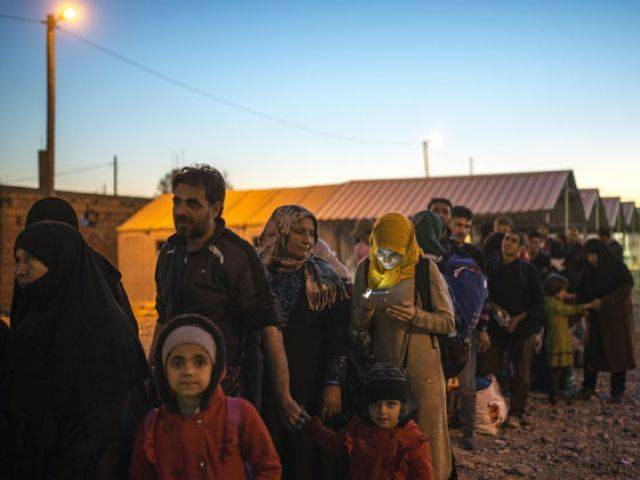Numbers tell staggering story of EU migrant crisis
Since 2014, more than 1.6 million people have arrived by sea while 13,500 have died on the way

The images from a crisis entering its third year have become shockingly familiar: capsized boats, refugees teargassed in squalid border camps, a Syrian boy's tiny body on an empty beach. PHOTO: AFP
The images from a crisis entering its third year have become shockingly familiar: capsized boats, refugees teargassed in squalid border camps, a Syrian boy's tiny body on an empty beach. Here AFP looks at the numbers that tell a deeper story. The basic facts are stark: Since 2014, more than 1.6 million people have arrived by sea while 13,500 have died on the way.
The numbers also give answers to the important human questions: Where are these people coming from, where are they going, how many have died, and how many will be allowed to stay?
The migration crisis has no official starting point but statistics from the International Organisation of Migration (IOM) offer some chronological yardsticks.
Following gradual yearly increases since 2011, 2014 marked a first turning point with 170,100 people landing on Italian shores and 43,518 on Greek coastlines, up from 42,900 and 11,447 respectively the previous year.
EU-Turkey migrant deal turned Greek islands into 'prisons'
But it was in 2015 that the situation took on dizzying proportions. The IOM registered 1,011,712 arrivals by sea in Europe, including 853,650 on Greek shores, with the peak in arrivals hit in October, and 153,842 on Italy's coastline.
The increase was mainly a result of the worsening conflict in Syria alongside deteriorating conditions in Syrian refugee camps in Turkey, Lebanon and Jordan.
Among the arrivals in Greece in 2015, more than half -- 56.l per cent -- were Syrian, while 24.3 per cent were from Afghanistan and 10.3 per cent were from Iraq.
Most came to Greece across the Aegean Sea from Turkey. While the EU struggled to forge a collective response and help Greece cope with the influx, most of the migrants trekked along the so-called Balkan route toward wealthy northern European countries like Germany and Sweden.
The arrivals on the Italian coast in 2015 came on the central Mediterranean route, mainly from sub-Saharan African countries: 39,162 Eritreans, 22,237 Nigerians, 12,433 Somalis and 8,932 Sudanese.
There was a sharp drop in migrant arrivals in Greece in 2016, with the IOM registering a total of 363,401 arrivals on Greek and Italian shores, about one-third as many as the previous year.
In Greece, 173,614 arrived by sea, a drop of nearly 80 per cent, reflecting the combined impact of a controversial migrant deal between Turkey and the EU and the nearly total closure of the Balkans route.
The trend is continuing in 2017, with just 7,699 arrivals registered by the IOM in Greece during the first five months of the year.
But the lull in Aegean crossings is tenuous as Turkey is increasingly at odds with the EU and has threatened to scrap the migrant deal over European criticism of its crackdown after an attempted coup against President Recep Tayyip Erdogan.
Italy meanwhile has seen arrivals continue apace, hitting a new record in 2016 with 181,436.
Those arrivals were mainly Nigerians (20.7 percent), Eritreans (11.4 percent) and Guineans (7.4 percent), according to the IOM. Most are not considered potential refugees, but economic migrants who must be returned to their countries of origin.
Children in Greek migrant camps attempting suicide amid rising desperation
So far this year, figures confirm that the central Mediterranean route has once again become, by far, the main channel to Europe.
Italy has registered more than 65,000 arrivals since January, up nearly 20 percent from the same period last year.
While the migration crisis is often portrayed as a crisis facing the EU's roughly 510 million people, smaller countries outside the region have received a far higher proportion of arrivals.
Turkey hosts 3.2 million refugees, Lebanon shelters more than one million and Jordan is home to 660,000 according to the UN High Commissioner for Refugees. The vast majority are Syrians.



















COMMENTS
Comments are moderated and generally will be posted if they are on-topic and not abusive.
For more information, please see our Comments FAQ